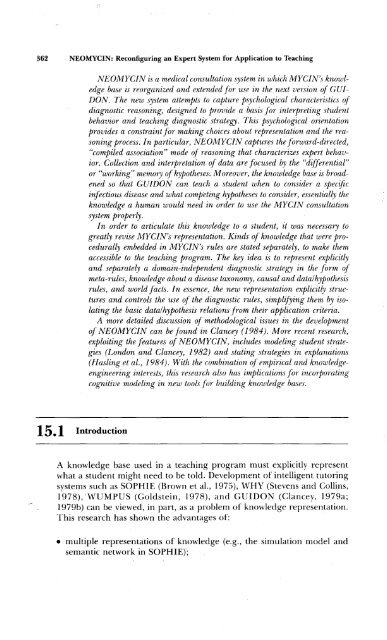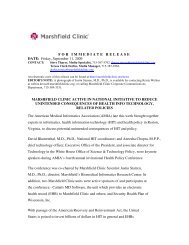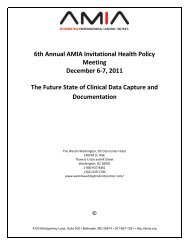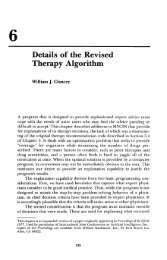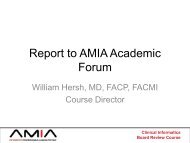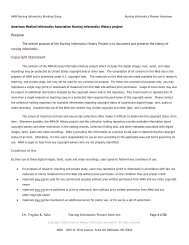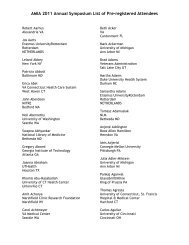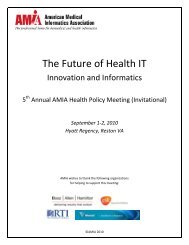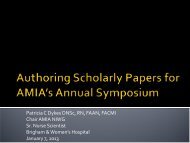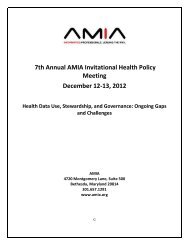Chapter 15 - People
Chapter 15 - People
Chapter 15 - People
You also want an ePaper? Increase the reach of your titles
YUMPU automatically turns print PDFs into web optimized ePapers that Google loves.
362 NEOMYCIN: Reconfiguring an Expert System for Application to TeachingNEOMYCIN is amedical consultation system in which MYCIN's knowledgebase is reorganized and extended for use in the next version of GUIDON. The new system attempts to capture psychological characteristics ofdiagnostic reasoning, designed to provide a basis for interpreting studentbehavior and teaching diagnostic strategy. This psychological orientationprovides a constraint for making choices about representation and the reasoningprocess. In particular, NEOMYCIN captures the forward-directed,"compiled association" mode of reasoning that characterizes expert behavior.Collection and interpretation of data are focused by the "differential"or "working" memory of hypotheses~ Moreover, the knowledge base is broadenedso that GUIDON can teach a student when to consider a specificinfectious disease and what competing hypotheses to consider, essentially theknowledge a human would need in order to use the MYCIN consultationsystem properly.In order to articulate this knowledge to a student, it was necessary togreatly revise MYCIN's representation. Kinds of knowledge that were procedurallyembedded in MYCIN's rules are stated separately, to make themaccessible to the teaching program. The key idea is to represent explicitlyand separately a domain-independent diagnostic strategy in the form ofmeta-rules, knowledge about a disease taxonomy, causal and datalhypothesisrules, and world facts. In essence, the new representation explicitly structuresand controls the use of the diagnostic rules, simplifying them by isolatingthe basic datal hypothesis relations from their application criteria.A more detailed .discussion of methodological issues in the developmentof NEOMYCIN can be found in Clancey (1984). More recent research,exploiting the features of NEOMYCIN, includes modeling student strategies(London and Clancey, 1982) and stating strategies in explanations(Has ling et al., 1984). With the combination of empirical and knowledgeengineeringinterests, this research also has implications for incorporatingcognitive modeling in new tools for building knowledge bases.<strong>15</strong> 1 Introduction•A knowledge base used in a teaching program must explicitly representwhat a student might need to be told. Development of intelligent tutoringsystems such as SOPHIE (Brown et al., 1975), WHY (Stevens and Collins,1978), 'WUMPUS (Goldstein, 1978), and GUIDON (Clancey, 1979a;1979b) can be viewed, in part, as a problem of knowledge representation.This research has shown the advantages of:• multiple representations of knowledge (e.g., the simulation model andsemantic network in SOPHIE),;


